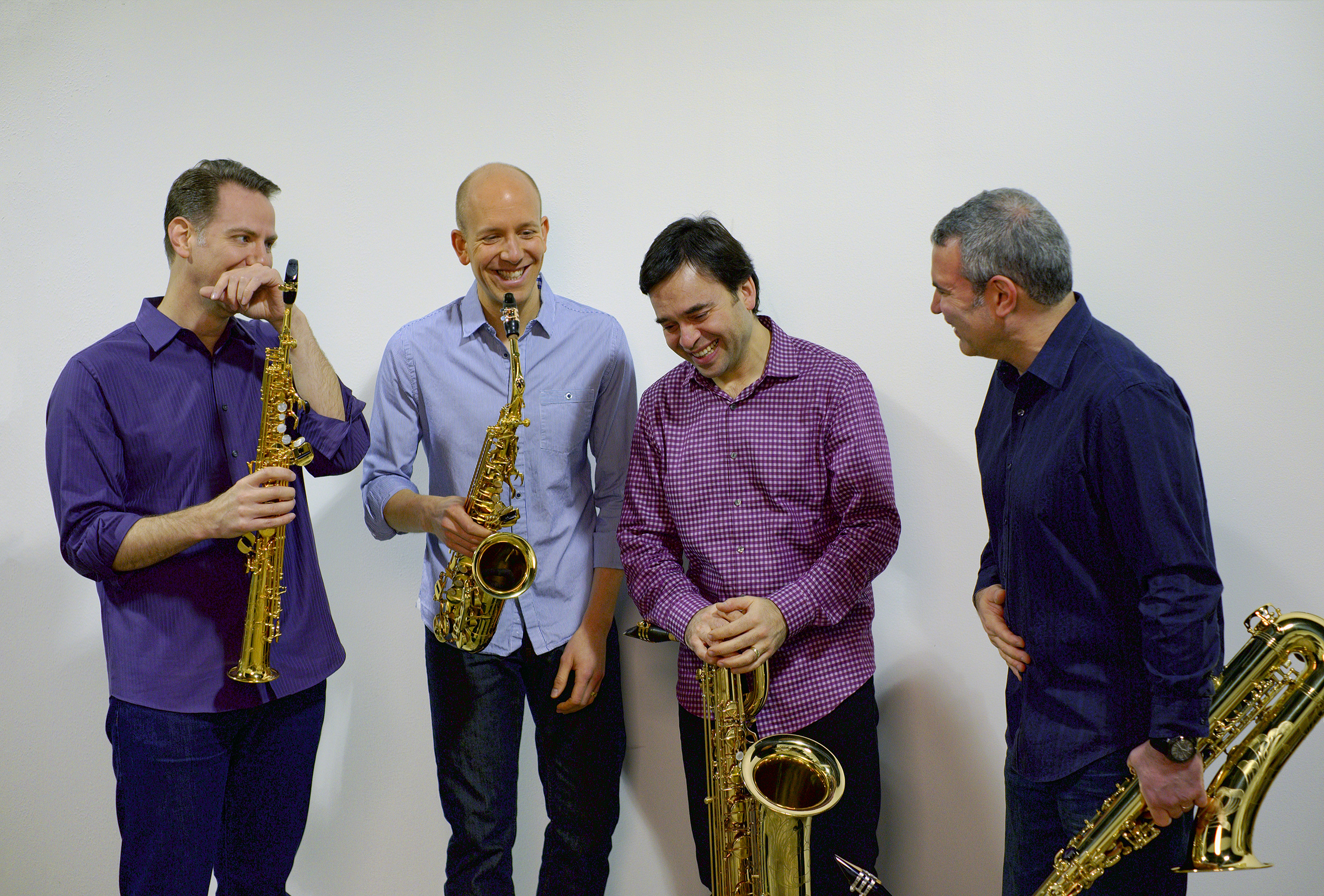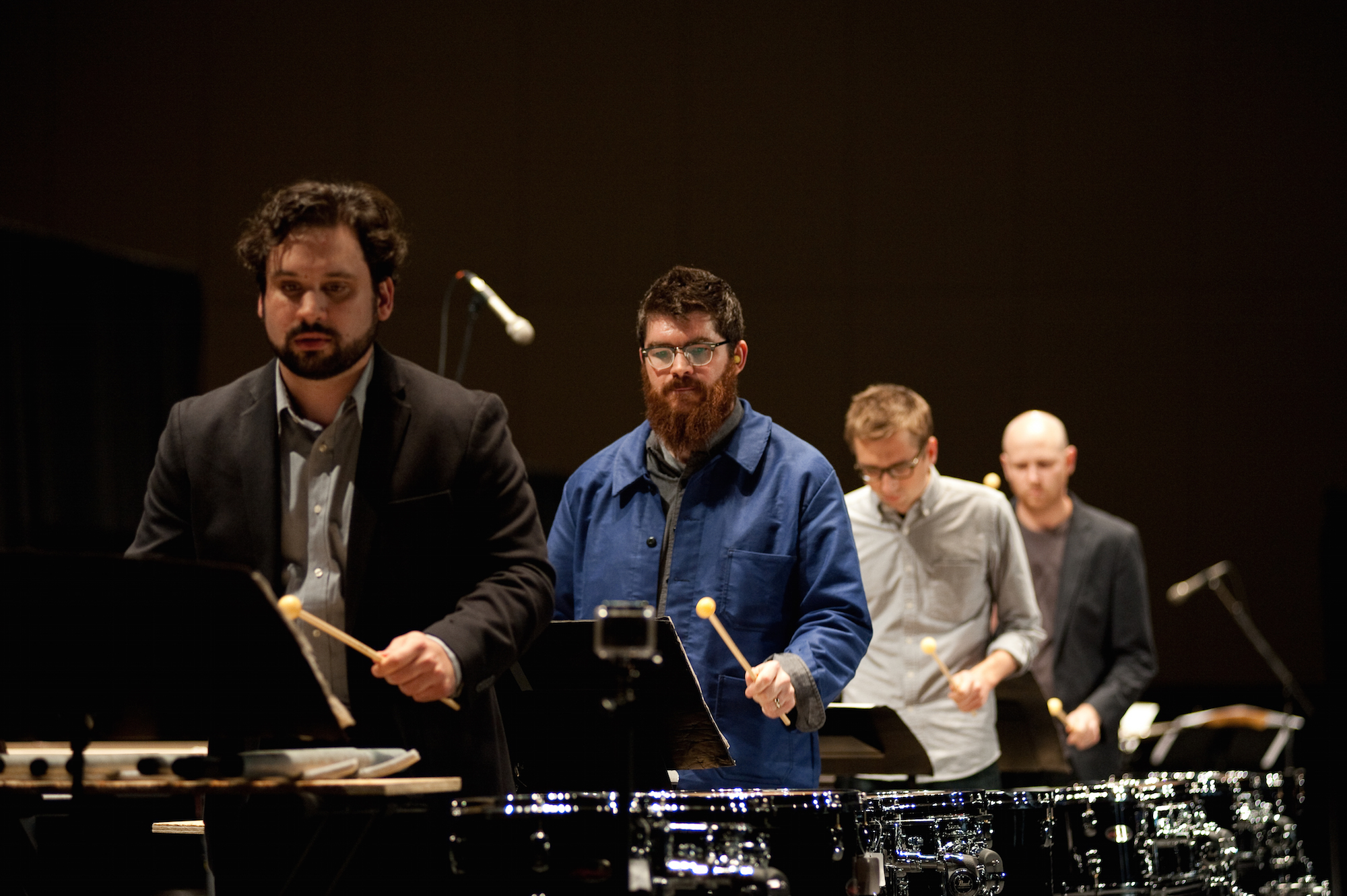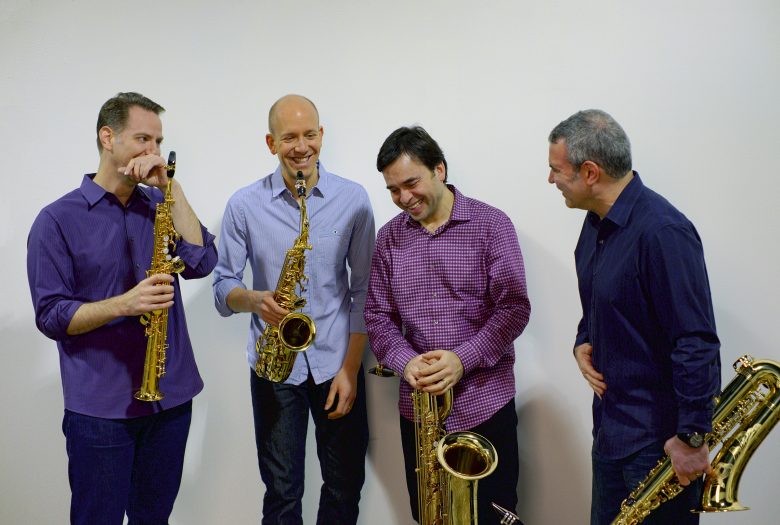Premiere of Blue Notes and Other Clashes by STEVEN MACKEY
Tickets: $17-$22, $3 more at the door
For complete information, artist videos, and to purchase tickets, please visit www.prismquartet.com
Click HERE to learn about PRISM’s COLOR THEORY concert with PARTCH (East Coast Debut) on June 12
For centuries, visual artists have used color theory to develop a body of knowledge about mixing pigments to create color combinations that provoke powerful emotional responses. PRISM’s COLOR THEORY project pioneers new possibilities of orchestration and musical color with first-time instrumental pairings that represent enormous unexplored potential.
In their first collaboration, PRISM and Sō Percussion premiere Blue Notes and Other Clashes by Steven Mackey and a new arrangement of Donnacha Dennehy’s The Pale. Mackey, who previously composed masterful works for both ensembles separately, creates the first major octet combining saxophone and percussion quartets. Dennehy’s work is a musical imagining of the area encompassing Dublin called the Pale, where British rule was at its strongest in the 14th century. According to Dennehy, “they even protected this area with ditches and fences to keep the barbarous, thuggish Irish out—the great unwashed were, as the phrase became, ‘beyond the pale.’” Also on the program: the New York premiere of Georg Friedrich Haas’ Saxophone Quartet, Bryce Dessner’s Music for Wood & Strings, and “Hymn” from Kati Agócs’ Coluratura.
Steven Mackey talks about his new work
“In this new work I imagine a dialogue between colorful, static timbral objects and syntactical, forward moving narrative elements. I will engage the idea that white light is made up of all the colors of the rainbow in a musical metaphor creating dense, heterogeneous textures that delineate a bright, joyous state of being—a glorious cacophony.”
COLOR THEORY will be broadcast by media partner WWFM and culminate in a recording on XAS Records (PRISM’S new label), distributed worldwide by NAXOS, with liner notes by WNYC’s John Schaefer.
PRISM Quartet
www.prismquartet.com

Intriguing programs of great beauty and breadth have distinguished the PRISM Quartet as one of America’s foremost chamber ensembles. Two-time winners of the Chamber Music America/ASCAP Award for Adventurous Programming, PRISM has been presented by Carnegie Hall, the Chamber Music Society of Lincoln Center, and as soloists with the Detroit Symphony and Cleveland Orchestra. Champions of new music, PRISM has commissioned over 250 works, many by internationally celebrated Pulitzer Prize-winning composers. PRISM’s discography includes 15 recordings for Albany, Innova, Koch, ECM, Naxos, New Dynamic, New Focus, and its own newly-launched label, XAS Records. PRISM may also be heard on the soundtrack of the film “Two Plus One” and has been featured in the theme music to the weekly PBS news magazine “NOW.” PRISM performs exclusively on Selmer saxophones.
Sō Percussion
www.sopercussion.com

For over a decade, Sō Percussion has redefined the modern percussion ensemble as a flexible, omnivorous entity, pushing its voice to the forefront of American musical culture. Praised by the New Yorker for their “exhilarating blend of precision and anarchy, rigor and bedlam,” Sō’s adventurous spirit is written into the DNA passed down from composers like John Cage and Steve Reich, as well as from pioneering ensembles like the Kronos Quartet and Nexus Percussion. Sō Percussion’s career now encompasses 16 albums, touring throughout the USA and around the world, a dizzying array of collaborative projects, several ambitious educational programs, and a steady output of their own music.
ACKNOWLEDGEMENTS
Original support for Color Theory was provided by The Pew Center for Arts & Heritage. This program is presented with generous support from the New York State Council on the Arts with the support of Governor Andrew Cuomo and the New York State Legislature; the Alice M. Ditson Fund of Columbia University; New Music USA; the National Endowment for the Arts; and Conn-Selmer, Inc.

